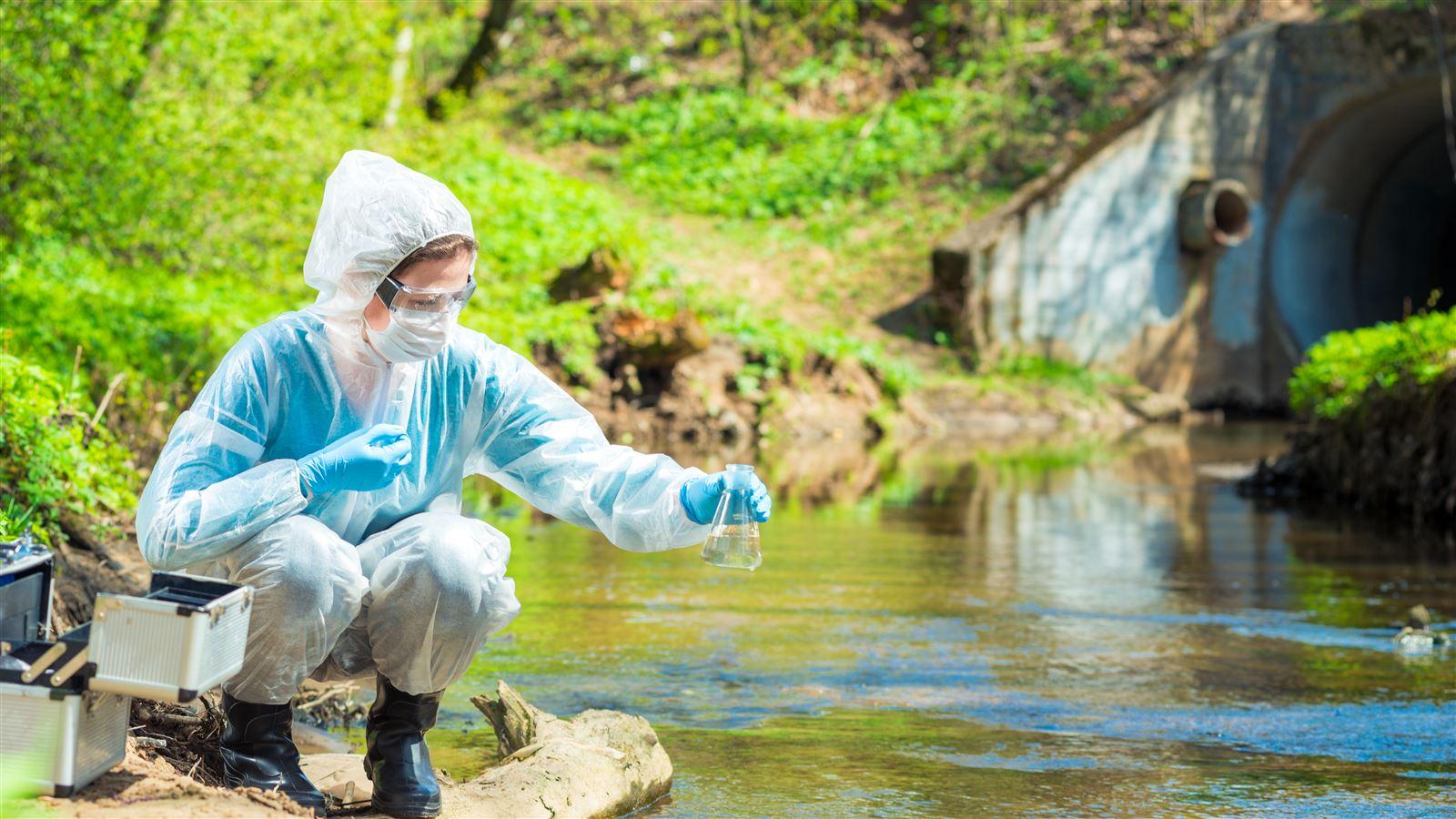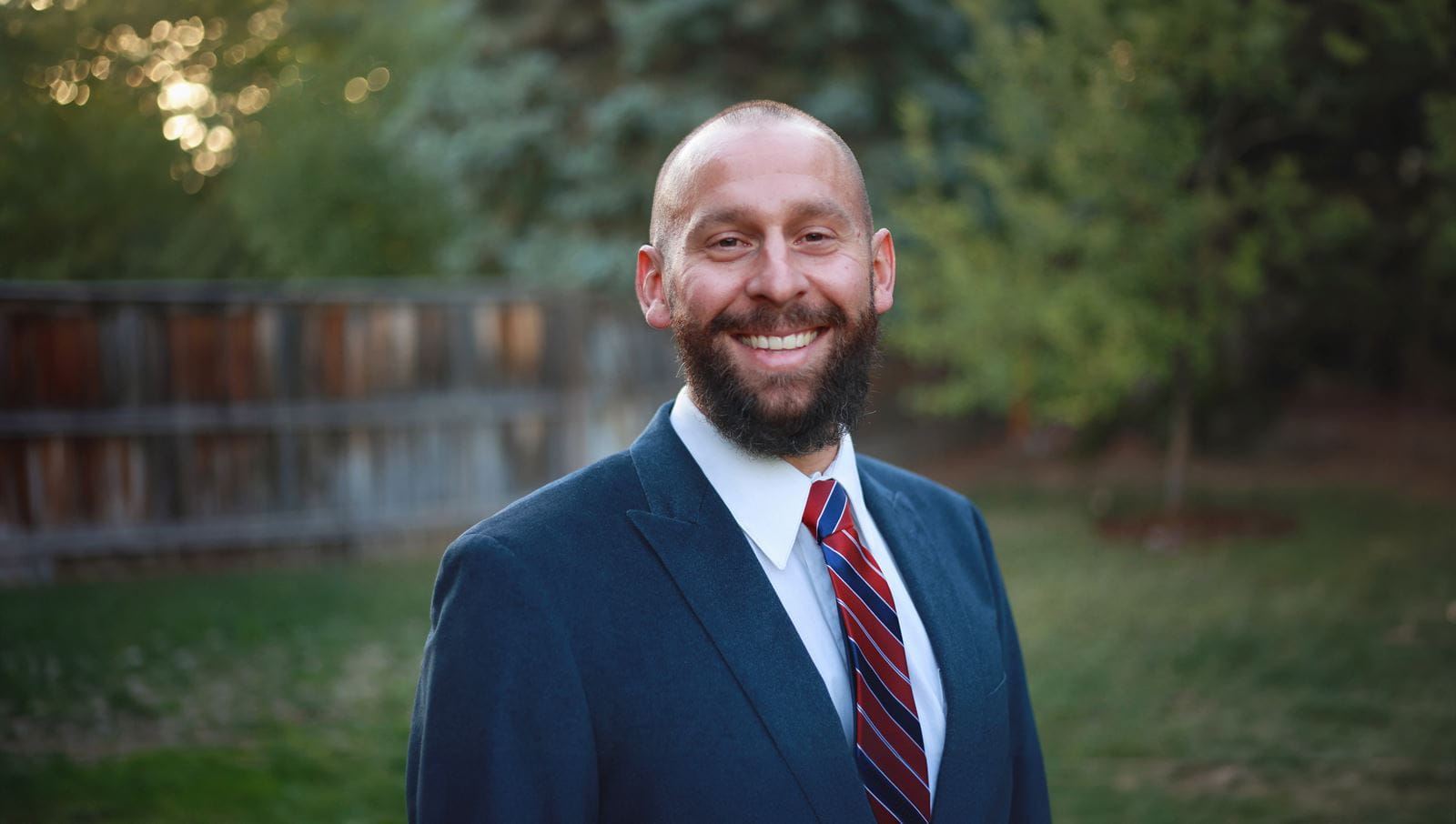A One Water Approach to PFAS Regulation in California
Current Understanding of PFAS
PFAS originate from a variety of places, either through the production of chemicals, their role in the manufacturing process and as industrial products (such as AFFF), or in homes as a component of consumer products.
DWQ and DDW are now focusing approximately 2,200 state-wide investigations on affected industries like chrome platers, airports, bulk fuel terminals and refineries, wastewater treatment plants (WWTPs) and landfills. These include sampling efforts of public water systems around airports and municipal solid waste landfills. Orders were also issued to publicly-owned treatment works (POTWs) to test influent and effluent discharges, who are in the process of completing their final reports.
The following diagram summarizes general PFAS concentrations found among these industries as a result of these investigative orders:
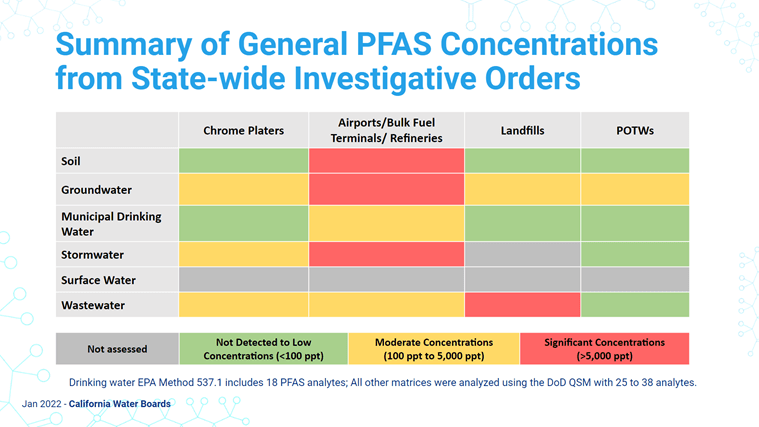
Investigators found the highest frequency of PFAS detection in airports, specifically in soil, groundwater, and stormwater, due to their use of aqueous film-forming foam (AFFF). High concentrations of PFAS were also found in landfills, which often results in PFAS entering into nearby sewer systems via leachate. And moderate concentrations of PFAS have been found in groundwater, stormwater and wastewater near chrome platers. The DWQ will be looking to assess PFAS in surface water in the near future.

We work on the hard problems. I’ve never had an “easy” project. That’s the way I like it!
Migrating to EPA Method 533
EPA recently published the fifth Unregulated Contaminant Monitoring Rule (UCMR 5) and is considering sampling for PFAS under method 533, possibly in addition to 537.1. The spectrum of 18 PFAS analytes currently covered for public drinking water is measured by EPA Method 537.1. Although not yet determined, it is likely that the California State Water Board will be migrating to EPA Method 533.
Method 533 will help pick up analytes that are being missed by 537.1. The same methodology and testing may satisfy both UCMR 5 and the state water board’s order to sample, though analysts should be aware that multiple samples may be needed since UCMR 5 requires the point of entry for their sampling location, while the water board prefers the source well.
“It’s a good move, a justified move, over to 533, and it’ll help better fill in some of the gaps we are missing by 537.1,” said Dan Newton, Assistant Deputy Director at California State Water Board’s Division of Drinking Water.
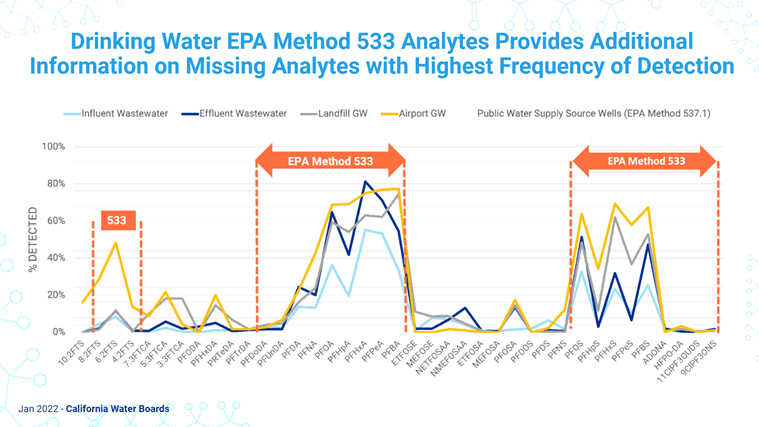

Regulatory Levels
PFOA and PFOS have proposed public health goals (PHGs) of 0.007 ppt (parts per trillion) and 1 ppt respectively. As the PHG is finalized, which is well on its way, the public process of establishing a maximum contaminant level (MCL) will begin. Assuming things remain on track, the MCL for PFOA and PFOS will be ready by 2025.
With regard to some other PFAS analytes, there are few occurrences of PFBS being found in California, so it is unlikely that there will be any public health goal for PFBS. Looking towards the spring, a notification level (NL) and response level (RL) will be ready for PFHxS.
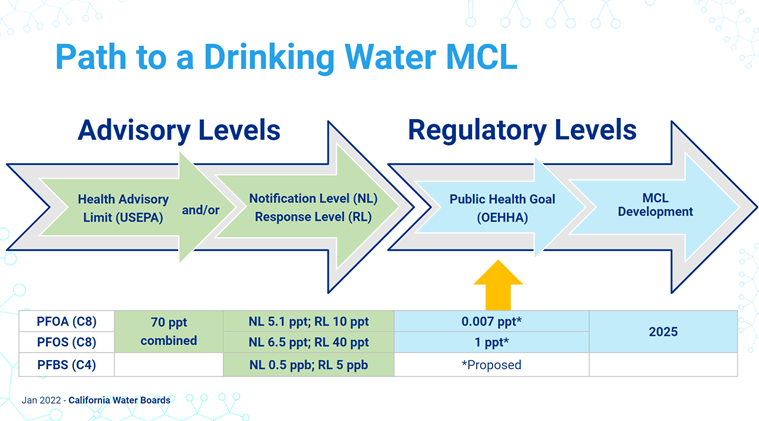
Studies in Progress
Method Correlation Study – Selected drinking water wells across California are being used to understand the type of PFAS compounds being reported through both targeted methods (like EPA Method 533) and nontargeted methods. The U.S. Environmental Protection Agency Office of Research and Development is assisting with review and analysis of the data from nontargeted methods.
Septic-Dominated Community Study – Data and drinking water source wells in areas known to be septic-dominated have been collected. This study is also still in the data-analysis phase.
Surface Water Intakes – As mentioned earlier, surface water needs to be explored. Intake samples from several large rivers in California will be collected. There will additionally be coordination with community programs that collect surface water samples.
More Information
All the data that has been discussed is easily accessible using the GeoTracker PFAS Mapping Tool. More information is also available at the water board’s PFAS website, the DDW PFOA/PFOS website, as well as their social media accounts.
Wendy Linck is a Senior Engineering Geologist at the State Water Resources Control Board’s Division of Water Quality (DWQ). She is managing the State Water Board's response to the PFAS effort within DWQ and is a liaison with the Division of Drinking Water on the subject.
Dan Newton is an Assistant Deputy Director at California State Water Board’s Division of Drinking Water and oversees the Northern California Field Operations Branch. The Branch permits and regulates over 4,000 drinking water systems from Monterey to the Oregon border. Prior to Drinking Water Dan worked in the Waterboard’s Division of Water Quality and Division of Financial Assistance.

